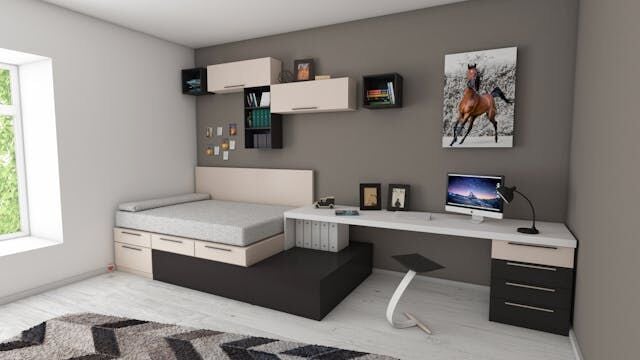
Embarking on home improvement projects can be an exciting yet daunting task; with numerous potential changes to consider, it’s crucial for owners to prioritize effectively to ensure a successful and satisfying outcome. Here are some essential tips to help you prioritize changes and make the most of your efforts.
Assess Your Needs and Goals
Before diving into any renovation project, take the time to assess your needs and goals. Consider both your immediate and long-term objectives for your home.
Identify Pain Points
Make a list of the areas in your home that are causing the most inconvenience or dissatisfaction. This could be anything from a dated kitchen to a lack of storage space or an inefficient layout.
Define Your Goals
Determine what you hope to achieve with your renovations. Are you looking to increase the functionality of your space, improve its aesthetic appeal, or boost its resale value? Having clear goals will help guide your decisions and ensure that your efforts align with your overall vision.
Set a Realistic Budget
Establishing a realistic budget is crucial for prioritizing home improvements. Without a budget, it’s easy to overspend or run out of funds before completing essential projects.
Research Costs
Take the time to research the costs associated with different types of remodels, so consider consulting with contractors or interior designers to get accurate estimates.
Allocate Funds Wisely
Prioritize projects that will have the most significant impact on your space’s functionality and value. Essential repairs, such as fixing structural issues or updating outdated systems, should take precedence over purely cosmetic changes.
Consider Return on Investment (ROI)
While it’s important to make changes that will enhance your enjoyment of your home, it’s also wise to consider the potential return on investment (ROI) of your renovations, especially if you plan to sell your house in the future.
High-ROI Projects
Certain projects tend to offer higher returns, such as kitchen and bathroom remodels, energy-efficient upgrades, and adding functional living spaces, as prioritizing these changes can increase your market value. Just take a look at the before and after examples seen on the Solid Solutions website to get an idea of what the results may look like: http://www.solidsolutionsrenovations.com/kitchen-renovations-calgary/
Balance Personal Preferences
Strike a balance between projects that offer a high ROI and those that cater to your personal preferences and lifestyle needs; after all, your home should reflect your tastes and provide a comfortable living environment.
Plan for the Long Term
When prioritizing changes, it’s essential to think long-term, so consider how your needs might evolve over time and how your remodel can accommodate these changes.
Future-Proofing
Incorporate elements that will stand the test of time and adapt to future needs – for example, if you’re planning to stay in your home for many years, consider aging-in-place features such as wider doorways, step-free entrances, and accessible bathrooms.
Avoid Trends
While it’s tempting to follow the latest design trends, opt for timeless, classic elements that won’t quickly go out of style. This approach ensures that your space remains attractive and functional for years to come.
Seek Professional Advice
Consulting with professionals can provide valuable insights and help you make informed decisions when prioritizing home improvements.
Interior Designers and Contractors

Interior designers can offer creative solutions and help you maximize your space, while contractors can provide practical advice on structural changes and costs. Their expertise can ensure that your projects are both aesthetically pleasing and technically sound.
Home Inspectors
A home inspection can identify hidden issues that need to be addressed, such as electrical problems, plumbing leaks, or foundation concerns, and tackling these issues early can prevent costly repairs down the line.
Create a Detailed Plan
A well-thought-out plan is essential for successful renovations. Outline the scope of each project, set realistic timelines, and establish a clear sequence of tasks.
Prioritize Urgent Repairs
Address any urgent repairs or safety issues first; these could include fixing a leaky roof, replacing faulty wiring, or addressing mold problems.
Phased Approach
Consider a phased approach to your renovations, tackling one project at a time based on priority and budget. This method helps prevent feeling overwhelmed and allows you to spread out costs.
From DIY to Home Renovation Experts
Prioritizing home improvements requires careful planning, clear goals, and a realistic budget – but by assessing your needs, considering ROI, and seeking professional advice, you can make informed decisions that enhance your functionality, aesthetics, and value. Remember to think long-term and create a detailed plan to ensure a successful and satisfying renovation experience, and with these essential tips, you’ll be well-equipped to prioritize changes and achieve your dream space.



(0) comments
We welcome your comments
Log In
Post a comment as Guest
Keep it Clean. Please avoid obscene, vulgar, lewd, racist or sexually-oriented language.
PLEASE TURN OFF YOUR CAPS LOCK.
Don't Threaten. Threats of harming another person will not be tolerated.
Be Truthful. Don't knowingly lie about anyone or anything.
Be Nice. No racism, sexism or any sort of -ism that is degrading to another person.
Be Proactive. Use the 'Report' link on each comment to let us know of abusive posts.
Share with Us. We'd love to hear eyewitness accounts, the history behind an article.